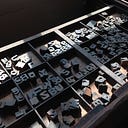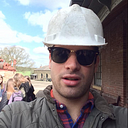WHAT IS SURREALISM?
sur·re·al·ism
noun \sə-ˈrē-ə-ˌli-zəm also -ˈrā-\
: a 20th-century art form in which an artist or writer creates by means of ironic and differing images. All meaning of objects in the art are transcended to something beyond by the means of irony and juxtaposition of different objects.
Surrealism as an art movement must first be understood as a philosophical movement. While the purveyors of the movement were naturally artists, the material is presented in the form of art. Underneath the meaning and reason for the arts creation is a deep philosophical theory that has since been called Surrealism. Below is the story of how this theory came to be.
Perhaps the most famous surrealist image is Rene Magritte’s “This Is Not a Pipe.” The characteristics of this painting are surreal only in the title and the written content at the bottom of the canvas; however, it is the unveiling of the usual latent content that Magritte pushes in the viewer’s face to establish the best example of the mode of surrealistic art. By painting a pipe and then stating that is indeed not a pipe, Magritte places an ironic twist on the meaning of objects as they appear to a viewer. Just like post-structuralist’s, Margritte pushes the viewer to question what objects mean and what art is.
THE ROOTS FROM DADISM
To begin the history of surrealism we must first turn to Dada. Dada was an international art movement with roots in Europe that spread to North America around the time of World War I. The earliest traces of the movement go back to Zurich, Switzerland where many left-wing artists began creating work with strong anti-bourgeoisie sentiment. The art, which began largely of poetry and prose, wanted to capture the opposite of all things the bourgeoisie represented and was mainly composed of overall chaos and disorientation. Hannah Hoch’s early collage (above) depicts this chaotic innovation of the art movement while also clearly posing a political statement at the same time.
“For us, art is not an end in itself … but it is an opportunity for the true perception and criticism of the times we live in.” — Hugo Ball on Dadaism
In 1916 Hugo Ball wrote the first Dada Manifesto which was followed in 1918 by a second Dada Manifesto by Tristan Tzara. With the production of these two written works and the immigration to New York during and after World War I, New York became a hotbed for Dadaism; however, the art in this region lacked the political cynicism and instead replaced these qualities with irony and humor of the times. While New York became the major city for postmodern art, after World War I, it was Paris that the world turned to for the future of art imagination. Around 1924, Dadaism in France had begun transforming into what we call now, Surrealism.
THE BIRTH OF SURREALISM
Andre Brenton in the 1920's was a Parisian whom began a collective that engaged in “automated writing,” where the penman would write out all conscious thoughts without taking a break. These pieces were later published and became known as the first formal Surrealist publications in Brenton’s La Révolution surréaliste. The writings were more interested in the subconscious mind and its exploits of the conscious mind, rather than the focus on what was actually written. The beginnings of surrealism are traced back to a focus on philosophical interpretation of the creative mind, and this carried through to the most contemporary pieces of surrealistic art as well. Once the conventional characteristics of a movement were formed out of this “automated writing,” Brenton created the Surrealist Manifesto, published in 1924.
The key point of the manifesto was that ordinary objects and depicted expressions are important, but it is truly the imaginative arrangement that creates art. Brenton points to juxtaposition as a key element of the surrealistic movement, as it allows the curator to bring two seemingly different objects together to form one coherent imaginative piece. Brenton describes that the more distant the two objects are the more sound and powerful the end image will be. Brenton also describes that the juxtaposition does not have to be within two images in a single frame or canvas, but it can also be an ironic gesture, as seen in the Pipe picture (top of the post).
FROM THE WRITTEN WORD TO VISUAL ART
The beginning of surrealism is largely constructed by the written word; however with the publication of La Révolution surréaliste over a period of five years, images became the main-still in the publication. Some of the first accounts of imagery included are photographs by Eugene Atget. While Atget was photographing the streets of Paris in the early twentieth century, his images were the foundation for all painting and photography of the surrealistic tradition to come.
The earliest published paintings for the surrealists came from people such as Man Ray, an American who spent much of his life in Paris, and characterized his paintings with characters without faces. This simple touch to his paintings became a large scale movement within itself; however, it is a simple characteristic of the surreal itself in that it leaves identify open to the imagination and the subject portrayed could be anyone indeed.
THE GOLDEN AGE OF SURREALISM
The 1930's offered a time of popularity among the arts, specifically the showcasing of surrealist work. The 1930's saw more exhibits of surreal artwork than any decade since and produced the groundwork for how art would be showed in contemporary times. The obvious popularity of the 1930's was a result of Salvador Dali’s success as well as many of his contemporaries. Dali created surrealistic paintings where his imagination roamed larger than most any other artist of the time. Images such as the “Christ of Saint John at the Cross” as well as “Shirley Temple, The Youngest, Most Sacred Monster of the Cinema in Her Time” provide the underlying political and social discourses in a chaotic or disoriented vision of juxtaposition that offers the object to be expressed in terms other than the usual.
The 1930's also saw an increase in artistic organizations that catered specifically to surrealism as well as more publications to present the work of surrealism’s most prominent as well as up and coming artists. As the art has been mass produced, the theory and roots of the underylying, organic concepts have been lost. It is my hope that through my research I can show how Laughlin created a distinctive surrealism in his photography through his upbringing and perception of the South.

